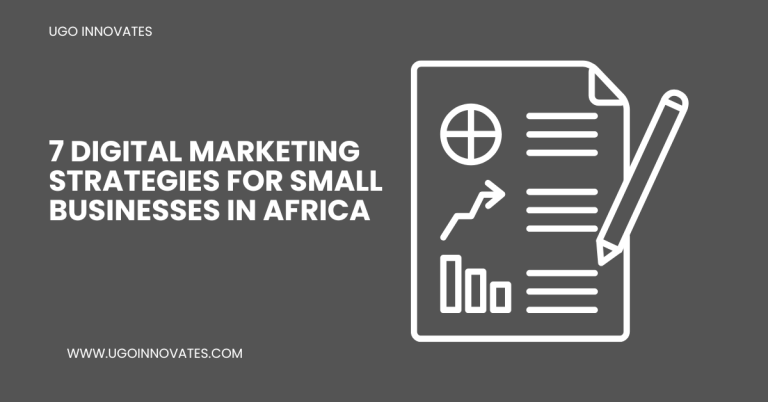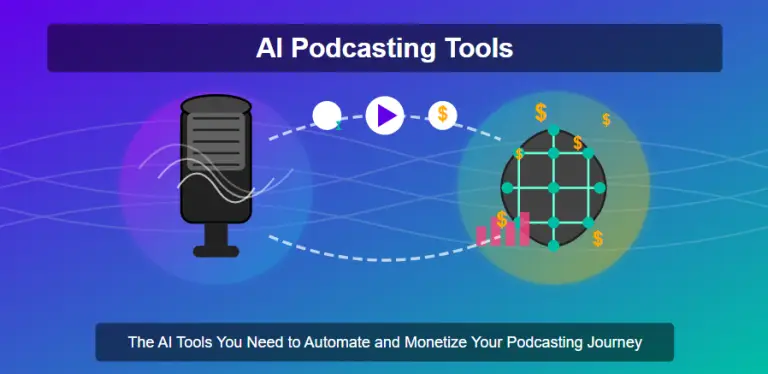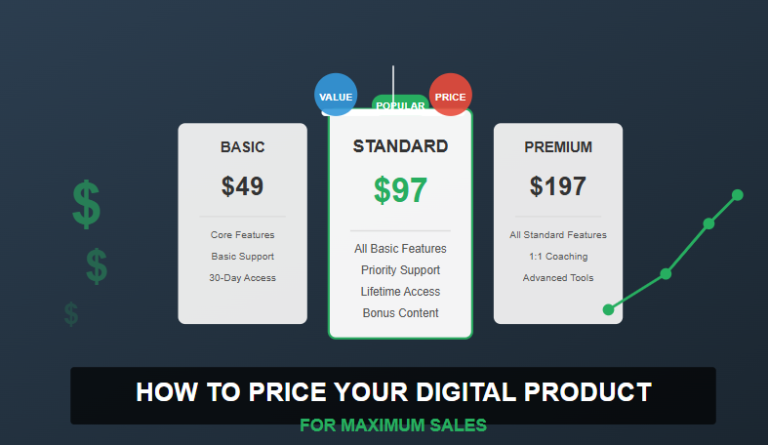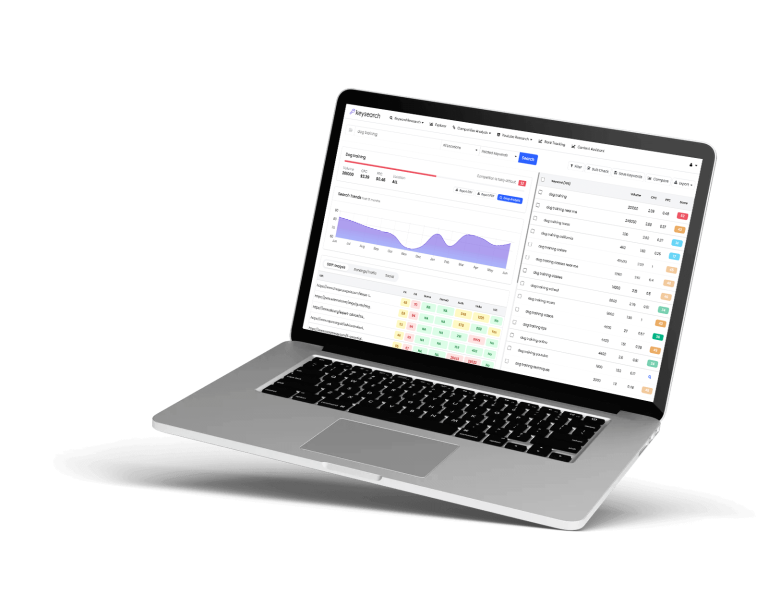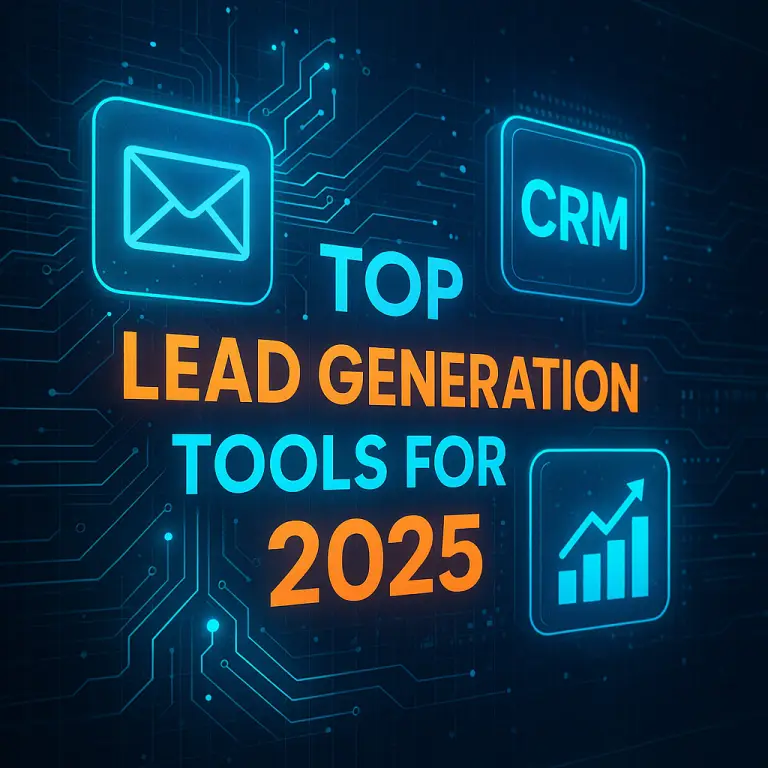B2B Lead Generation: In today’s competitive B2B landscape, lead generation isn’t just important—it’s essential. It’s the engine that powers your sales pipeline, drives revenue, and ultimately fuels long-term growth.
But what is B2B lead generation?
At its core, B2B lead generation is the process of identifying and attracting potential business clients—companies that are most likely to benefit from and purchase your products or services. However, attracting high-quality leads takes more than just a contact form or a cold email.
It demands a strategic, data-driven approach, a deep understanding of your ideal customer profile, and the right combination of marketing channels—from content and email to social media and beyond.
That’s where this guide comes in.
In this comprehensive breakdown, we’ll walk you through the most effective strategies for B2B lead generation in 2025. You’ll discover:
- How to leverage content marketing, email outreach, and social media lead generation companies to drive inbound interest
- Why your website is one of the top lead generation sites and how to optimize it for conversions
- How webinars, online events, and lead magnets can fill your pipeline with warm, qualified leads
- What lead scoring is—and how it helps you prioritize your most sales-ready prospects
But that’s not all.
We’ve also curated a complete lead generation companies list, featuring the top lead gen companies that are transforming how businesses attract leads. Whether you’re looking for the best leads company for your niche or want to explore the largest lead generation companies in the world, this list has you covered.
Looking to work locally? We also highlight the leading lead generation companies in the USA that have a proven track record of delivering results.
Finally, we’ll explore how to use analytics and tracking to measure the success of your campaigns, along with proven tips to overcome the most common challenges in B2B lead generation.
If you’re serious about scaling your business, finding the right leads generation companies or building your own winning strategy starts here.

So, whether you’re a seasoned marketer looking for new strategies or a business owner trying to understand the world of B2B lead generation, this guide is for you.
Let’s dive in and uncover the secrets to successful B2B lead generation.
Understanding B2B Lead Generation
Understanding the intricacies of B2B lead generation is fundamental. It’s not just about quantity; quality is crucial too. High-quality leads are more likely to convert, bringing value to your business.
Lead generation in B2B involves several stages. These range from attracting potential leads to nurturing them through the sales funnel. Each stage requires its strategies and tools for optimal results.
The process often involves creating awareness and interest in your products or services. This can be achieved through various tactics, including content marketing, social media engagement, and targeted advertising.
Here are key components of B2B lead generation:
- Targeting and segmentation: Identifying your ideal customer profile (ICP) and segmenting your audience accordingly.
- Value proposition: Communicating what sets your products or services apart.
- Engagement and conversion tactics: Using content and campaigns to turn interest into action.
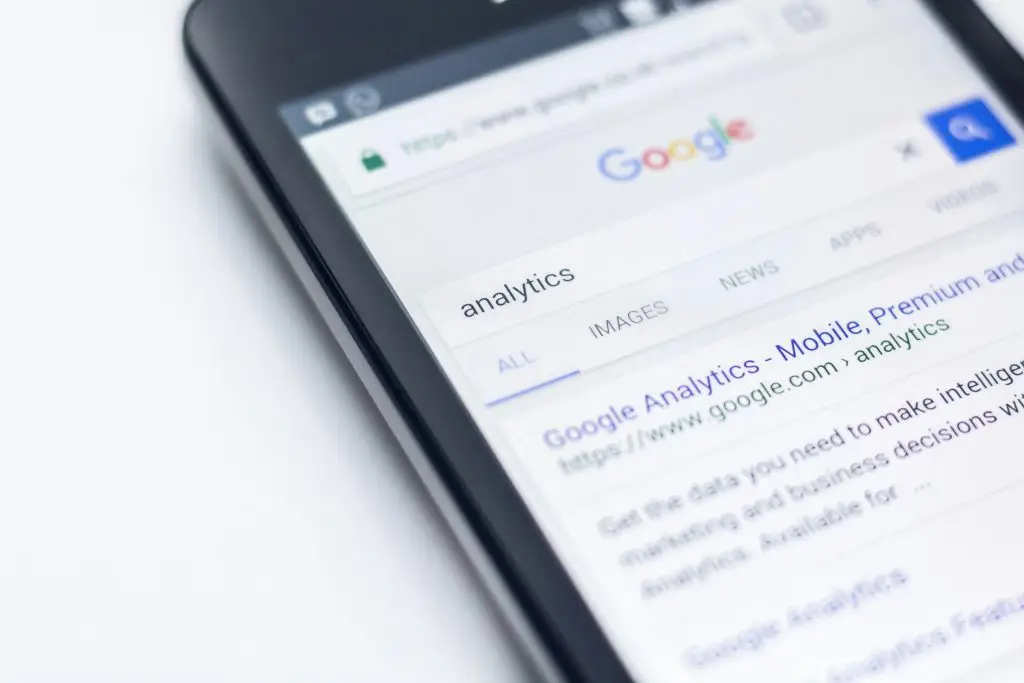
Understanding these elements helps in crafting strategies that resonate with potential clients. This foundational knowledge is essential for successful lead generation efforts in any B2B environment.
The Importance of B2B Lead Generation
B2B lead generation holds immense importance for businesses. It fuels sales pipelines and sustains business growth. Without a steady stream of leads, companies can face stagnation.
Moreover, effective lead generation allows businesses to build relationships. It’s not just about closing deals but also about establishing long-term partnerships. These relationships are the key to repeat business and referrals.
Additionally, B2B lead generation helps in identifying market needs. It provides insights into what potential clients seek in products or services. Such knowledge can inform future business strategies and offerings.
B2B vs. B2C Lead Generation: Key Differences
B2B and B2C lead generation differ significantly. The buying process in B2B is often more complex, involving multiple decision-makers. This complexity means B2B sales cycles are typically longer than in B2C.
Another key difference is the approach to communication. B2B marketing relies heavily on detailed information. Clients seek in-depth content that demonstrates expertise and value. In contrast, B2C often focuses on appealing to emotions or immediate needs.
Lastly, the scale and nature of the market differ. B2B markets tend to be narrower but more specialized. Understanding these distinctions is crucial for effectively tailoring lead generation strategies.
Content Marketing: A Cornerstone for B2B Lead Generation
Content marketing is pivotal in B2B lead generation. It attracts, engages, and converts potential leads into customers. High-quality content builds trust and authority, essential elements in B2B markets.
Creating valuable content involves understanding your audience’s pain points and providing solutions. When content resonates, it can significantly increase lead generation effectiveness. It positions your company as a go-to resource in your industry.
Different types of content serve varied purposes in lead generation. Blogs, whitepapers, and case studies can educate and inform. Webinars and podcasts offer opportunities for deeper engagement.
Key components of a content marketing strategy include:
- Audience analysis: Understanding the needs and preferences of your target audience.
- Content planning: Developing a content calendar and strategy.
- Distribution channels: Leveraging platforms and mediums that effectively reach your audience.
Successful B2B content marketing strategy:

Regularly updating and optimising content keeps it relevant and engaging. This continuous effort helps maintain a steady flow of leads over time.
Crafting Content That Converts
Creating content that converts starts with understanding your audience’s needs.
- Address pain points with practical solutions.
- Positioning your content as highly valuable.
This relevancy encourages leads to engage further.
Effective content offers clear, actionable insights. It should guide potential leads on how your products or services can solve their problems. This clarity helps in moving prospects through the sales funnel.
Moreover, storytelling can enhance engagement. Sharing success stories and testimonials builds trust and credibility. Prospects relate to real-life scenarios, making them more likely to consider your offerings.
Visuals also play a crucial role. Infographics and videos simplify complex information. They increase comprehension and retention, boosting conversion rates.
Leveraging SEO for Content Visibility
For content marketing to succeed, visibility is key. SEO ensures that your content reaches its intended audience. Optimizing content for search engines can increase organic traffic and lead generation.
Keyword research is a critical component of SEO. Identify terms and phrases your target audience uses. Incorporate these keywords naturally throughout your content for improved search visibility.
Beyond keywords, technical SEO aspects like site speed and mobile optimization matter. They impact how search engines rank and display your content. Ensuring a seamless user experience can boost your SEO efforts.
Backlink building also enhances visibility. Gaining links from authoritative sites can improve trust and rankings. Collaborate with industry influencers and publications for guest posting opportunities.
Finally, track your SEO performance through analytics. Analyze metrics to understand what’s working and adjust your strategy for continuous improvement.
Email Marketing: Personalised Outreach for B2B Leads
Email marketing is a powerful tool in B2B lead generation. Its personalised approach makes it effective for reaching specific prospects. Well-crafted emails can nurture leads and build lasting relationships.
The strength of email lies in its personalization. Tailor messages to match the preferences and needs of your audience. This connection fosters trust and engagement, crucial for B2B success.
List segmentation enhances the effectiveness of your campaigns. Group your prospects based on various factors like industry, job role, or buying stage. Segmentation allows you to send relevant content, increasing the chances of conversion.
A successful email strategy includes:
- Compelling subject lines: Grab attention with creative and relevant subject lines.
- Engaging copy: Ensure the message is clear and provides value.
- Strong call-to-action (CTA): Encourage recipients to take the next step.
Automation tools can streamline your efforts. Automating follow-ups and nurturing sequences saves time and ensures consistency. It also allows you to track engagement and refine your approach.
Here’s an image depicting the key elements of an email marketing strategy:
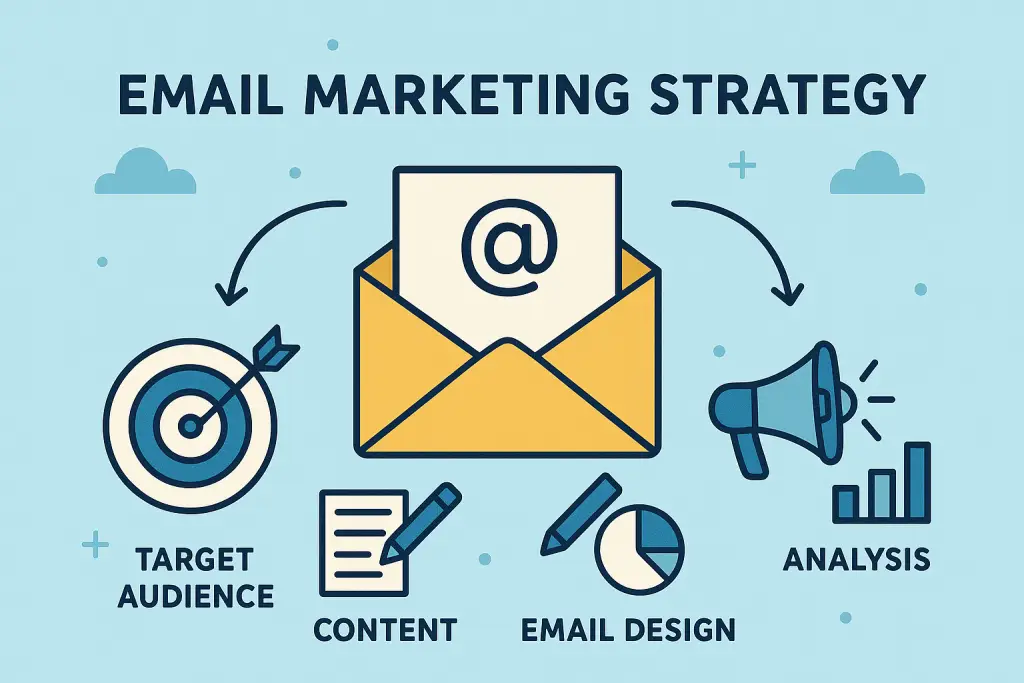
Building an Effective Email Campaign
Crafting an effective email campaign begins with clear objectives. Know what you want to achieve, whether it’s nurturing, conversion, or re-engagement. Define measurable goals to track the campaign’s success.
Content is vital in email marketing. Ensure your emails are concise yet informative. Every email should focus on solving a specific problem or providing valuable insights to your audience.
Visual elements, like images and videos, can enhance engagement. They break up text and highlight key points. However, balance is crucial; too many visuals can be distracting.
Finally, testing is key to perfecting your email campaigns. A/B testing various elements can provide insights into what resonates with your audience. Refine your approach based on data for better results.
Measuring Email Marketing Success
To assess an email campaign’s effectiveness, focus on key metrics. Open rates indicate initial interest, while click-through rates measure engagement. These metrics provide insights into your email’s appeal and relevance.
Conversion rate is another crucial metric. It tells you how many recipients take the desired action, whether it’s a signup or purchase. High conversion rates suggest your message resonates well.
Analyze unsubscribe rates as they can signal dissatisfaction or disinterest. A high rate might mean your content isn’t meeting expectations. Use feedback to improve your strategy and retain your audience.
Regularly review your metrics and adjust your campaigns accordingly. Monitoring these statistics helps optimize your approach. Continuously refine your strategy to improve outcomes and maximize your efforts.
Social Media and B2B Lead Generation
Social media plays a pivotal role in modern B2B lead generation strategies. Businesses use these platforms to connect with prospects and promote their services. With a strategic approach, social media can effectively drive lead generation success.
LinkedIn is often regarded as the top platform for B2B engagement. Its professional network allows companies to reach decision-makers efficiently. A well-managed LinkedIn presence can enhance brand credibility and visibility.
While LinkedIn is crucial, other platforms also offer great lead generation opportunities. For example, Twitter is excellent for real-time engagement. Use it to join relevant conversations and showcase industry expertise.
Facebook, while often seen as a B2C platform, can still be effective for B2B. It offers robust advertising options to target specific business demographics. Tailored ads can drive traffic to your website or landing pages.
For successful social media lead generation, consider these strategies:
- Engage with your audience: Respond promptly to comments and messages.
- Share valuable content: Provide insights and information that your audience finds useful.
- Utilize targeted ads: Use precise targeting to reach the right people.

LinkedIn: The B2B Lead Generation Powerhouse
LinkedIn stands out as a highly effective platform for B2B lead generation. Its user base consists largely of professionals, making it ideal for B2B connections. Companies use LinkedIn to identify prospects and build industry relationships.
A strong LinkedIn presence begins with an optimized company page. Include detailed descriptions and key information to attract potential leads. Utilize engaging visuals to make your profile stand out.
Content sharing is crucial on LinkedIn. Share articles, updates, and industry news to establish authority. Engage with your audience by commenting on and sharing others’ content as well.
LinkedIn’s advanced search features help find and engage with target prospects. Use filters to narrow down searches by location, industry, or job title. Personalized connection requests and messages can then foster valuable business relationships.
Other Social Platforms for B2B Leads
While LinkedIn is indispensable, other social media platforms offer unique B2B opportunities. Twitter’s fast-paced environment is perfect for engaging discussions. It allows businesses to position themselves as thought leaders within their niche.
Facebook also plays a role in B2B lead generation. Its advanced ad targeting lets businesses reach specific audiences effectively. Use Facebook to share relatable content and join relevant groups for increased visibility.
Instagram might not be a traditional B2B platform, but it can still drive engagement. Visual content highlights company culture and brand personality. Showcase events, achievements, and behind-the-scenes moments to connect with your audience.
Ultimately, integrating multiple platforms into your strategy enhances your lead generation efforts. Craft tailored content for each platform. Ensure messaging aligns with your brand while appealing to different audiences.
PPC Campaigns and Their Role in B2B Lead Generation
Pay-per-click (PPC) campaigns are potent tools for B2B lead generation. They allow businesses to target specific audiences based on keywords and demographics. This precision helps attract quality leads likely to convert into customers.
PPC ads appear above organic search results, granting immediate visibility. This prominent placement ensures that your brand is seen first. Combined with strong ad copy, PPC can substantially impact lead volume.
Running a successful PPC campaign requires strategic planning and execution. It’s vital to create compelling ad content that resonates with your audience. Focus on addressing pain points and highlighting your unique value propositions.
Marketers often employ PPC across platforms like Google Ads and LinkedIn. Each offers unique targeting options and potential audiences. To maximize effectiveness, align your PPC strategy with your overall marketing goals.
Consider these key elements for successful PPC campaigns:
- Keyword research: Use relevant keywords to attract the right audience.
- Ad copy optimization: Ensure your ads are clear and persuasive.
- Targeting precision: Utilize demographic and interest-based targeting.

Crafting High-Converting PPC Ads
Creating high-converting PPC ads requires a keen understanding of your target audience. Start by identifying the specific needs and challenges of your prospects. Tailor your ad copy to speak directly to these points.
Use action-oriented language to drive user engagement. Phrases like “Discover now” or “Get your free trial” encourage clicks. Highlighting benefits over features can make the ad more appealing to potential leads.
Incorporate clear calls-to-action (CTAs) in your ads. A strong CTA guides the viewer towards taking the desired action. Ensure the link directs them to a relevant and optimized landing page.
Testing is crucial in PPC. A/B test different versions of your ads to identify what works best. This approach helps refine your strategy and improve conversion rates over time.
Analyzing PPC Campaign Performance
Analyzing PPC performance is essential to optimizing your lead generation efforts. Start by tracking key metrics such as click-through rates (CTR) and conversion rates. These numbers provide insight into your ads’ effectiveness.
Consider the quality score of your ads. This score reflects relevance and impacts ad placement and cost. Higher quality scores typically lead to better positions and lower costs per click.
Evaluate landing page performance to ensure alignment with ad copy. A consistent message from ad to landing page can enhance user experience. Use tools like heatmaps to observe user interactions and make necessary improvements.
Finally, review your campaign’s return on investment (ROI). This metric indicates the profitability of your PPC efforts. Adjust your budget and bidding strategy based on performance to maximize ROI.
The Power of a Well-Designed Website
A well-designed website is crucial for effective B2B lead generation. It serves as the central hub for all digital marketing efforts. An attractive and easy-to-navigate website draws potential leads.
The website should communicate your brand’s value instantly. This clarity encourages visitors to engage with your content. Employing a responsive design ensures usability across all devices.
A strong website design goes beyond aesthetics; it’s also functional. Fast loading times are essential, as slow pages drive away visitors. Clear paths to important information maintain user interest.
Here’s a checklist to enhance your website’s lead generation potential:
- Responsive layout: Ensures an optimal view on all devices.
- Fast loading speeds: Reduces bounce rates and improves satisfaction.
- Clear CTAs: Guides visitors towards desired actions, like signing up.
AlsoRead: 7 Proven Digital Marketing Strategies for Small Businesses in Africa
Conversion Optimization Techniques
Conversion optimization involves various strategies to turn visitors into leads. One key technique is using compelling calls-to-action (CTAs). They should be prominent and direct users to valuable content.
A/B testing is another effective method for conversion optimization. By experimenting with different headlines, colors, and layouts, you can determine what resonates best with your audience.
Landing pages must also be optimized for conversions. They should align with ads and provide concise, persuasive content. Clear navigation and relevant information help in maintaining visitor focus.
The Role of User Experience (UX) in Lead Generation
User experience (UX) plays a pivotal role in lead generation success. A seamless UX keeps visitors engaged longer, increasing the chances of conversion. Intuitive navigation ensures that users find what they need without frustration.
A consistent and user-friendly design across pages builds trust and credibility. This consistency should be reflected in design elements and messaging. It fosters a professional image that appeals to potential leads.
Ensure accessibility in your website’s design to cater to a broader audience. Websites should be usable for people with disabilities, complying with accessibility standards. A positive UX ultimately enhances brand perception and boosts lead generation efforts.
Lead Scoring and Prioritization
Lead scoring is a crucial process in B2B lead generation. It helps prioritize leads based on their potential to convert. This system assigns scores to leads based on various criteria.
Scored leads allow sales teams to focus on high-priority prospects. This increases the efficiency of lead nurturing efforts. Effective lead scoring aligns marketing and sales teams. Both collaborate on criteria to evaluate lead readiness.
Several factors influence lead scores. These include demographic information, engagement activities, and interactions with your brand. High scores typically indicate a prospect’s readiness to purchase.
Consider these elements when setting up lead scoring:
- Demographics: Fit of the lead with your ideal customer profile.
- Behavioral Data: Engagement levels with your brand or content.
- Firmographics: Size and industry of potential leads’ organisations.
- Past Interactions: Prior communication and action history.
Implementing Lead Scoring in Your Strategy
To implement lead scoring effectively, start with clear criteria. Align your scoring model with business goals and sales feedback. Identify key actions and attributes that drive conversions.
A pilot test can refine your lead scoring mechanism. Use data from CRM systems to adjust and perfect your criteria. Regular reviews ensure your scoring system remains relevant.
Advanced tools help in automating the scoring process. Many CRM platforms offer built-in lead scoring features. This automation saves time while improving accuracy and consistency.
Using Lead Scoring to Enhance Sales Alignment
Lead scoring significantly enhances sales and marketing alignment. Sales teams often have insights into what constitutes a “hot” lead. Use these insights to refine scoring criteria.
Sharing successful lead profiles with the marketing team enhances efforts. This collaboration ensures that messaging targets the right audience. It increases the likelihood of successful lead conversion.
Continual feedback loops are crucial. Regular meetings between sales and marketing refine strategies. This iterative process keeps both teams in sync and maximizes lead generation success.
Webinars and Online Events for Lead Generation
Webinars and online events have become essential tools for B2B lead generation. They offer a platform to showcase expertise while engaging prospects. Unlike traditional marketing, they provide direct interaction with potential leads.
These events allow businesses to present valuable content and gather insights. They effectively nurture relationships with prospects. Because of their value, attendees are often more qualified leads. Participants actively seek information, improving lead conversion chances.
When planning webinars, ensure your content addresses audience pain points. Choose timely topics that resonate with your target demographic. This relevance will attract more participants and enhance engagement.
Consider integrating these elements for effective webinars:
- Valuable Content: Focus on topics that provide actionable insights.
- Interactive Elements: Include Q&A sessions and polls for audience interaction.
- Follow-Up Strategy: Engage attendees post-event with personalized content.

Best Practices for Hosting Engaging Webinars
To host engaging webinars, start by selecting a compelling topic. Research what your target audience is interested in. Tailor content to solve their problems and meet their needs.
Next, promote your event through multiple channels. Use social media and email campaigns to reach your audience. Early promotion increases registration numbers and ensures greater attendance.
During the webinar, keep the content interactive. Use polls and Q&A sessions to engage the audience. This involvement helps sustain interest and drives valuable dialogue.
Leveraging Events for Networking and Lead Capture
Events serve as excellent platforms for networking and lead capture. They bring together industry professionals and potential clients. Use this opportunity to establish connections and build relationships.
Prepare to capture leads during and after events. Use registration forms to gather attendee information. Offer downloadable materials in exchange for contact details.
Follow up with leads promptly after the event. Send personalized emails based on their engagement during the webinar. This quick follow-up enhances your chances of converting leads into clients.
Outsourcing to Top Lead Generation Companies
Outsourcing B2B lead generation can provide a strategic advantage. Specialized companies offer expertise and tools for more effective results. They can help you reach your target audience quickly and efficiently.
Outsourcing frees up your internal resources. Your team can focus on core operations rather than lead management. This shift often leads to increased productivity and better sales outcomes.
These lead generation firms bring industry insights and experience. They stay updated with the latest trends and technologies. This knowledge allows them to implement proven strategies for generating high-quality leads.
Partnering with a top leads company can significantly boost your sales pipeline. They know where to find your ideal customers and how to engage them. Their methods can accelerate your growth.
Key benefits of outsourcing include:
- Expertise: Leverage their specialized skills and experience.
- Access to Technology: Utilize cutting-edge tools and analytics.
- Scalability: Easily adjust efforts to match demand fluctuations.

Criteria for Selecting a Lead Generation Partner
Choosing the right partner is crucial for your success. First, evaluate their industry experience. A company familiar with your field will understand your unique challenges.
Check their track record. Look for testimonials and case studies that highlight past successes. Their history can indicate their effectiveness and reliability.
Consider their methodologies and tools. Ensure they use data-driven strategies and the latest technology. This approach helps in attracting and nurturing quality leads.
Lastly, assess their communication and reporting practices. A good partner will keep you informed with regular updates. Transparent communication is key to a successful collaboration.
List of Top B2B Lead Generation Companies
Numerous lead generation companies provide outstanding services. Below are some of the industry leaders. These firms consistently deliver high-quality leads and exceptional service.
First on the list is CIENCE. Known for their research-driven approach, they provide tailored lead generation strategies. They serve a wide range of industries, ensuring specificity in their methods.
Next is Belkins. They focus on email and LinkedIn lead generation. Their outreach methods are both innovative and effective in driving engagement.
Callbox is another top contender. Specializing in targeted multi-channel marketing, they offer services that cover the entire sales pipeline.
LeadGenius uses advanced data analytics to enhance lead quality. Their focus on technology allows them to deliver insights alongside leads.
Lastly, UpLead stands out with their highly accurate leads database. Their vast network ensures companies have access to comprehensive market data.
Here’s a quick list of these top companies:
- CIENCE: Research-focused, customized strategies.
- Belkins: Experts in email and LinkedIn outreach.
- Callbox: Comprehensive multi-channel marketing.
- LeadGenius: Data-rich analytics for quality leads.
- UpLead: Accurate, detailed market data.
Choosing from these top B2B lead generation companies can elevate your sales efforts. Selecting the right partner can yield great dividends in lead quality and sales results.
Measuring and Analyzing Lead Generation Success
Evaluating lead generation success is essential for growth. Without measurement, understanding effectiveness becomes challenging. Key performance indicators (KPIs) help in assessing these efforts. They pinpoint areas of strength and aspects needing enhancement.
Using KPIs ensures an objective view of the lead generation process. It allows businesses to set benchmarks and track progress. Consistent evaluation helps in aligning strategies with business goals.
Successful lead generation can be measured in many ways. Analyze conversion rates to see how many prospects turn into leads. This metric shows the impact of your marketing strategies.
Another critical aspect is the cost per lead. Understanding this helps in optimizing your budget. Lowering this cost without compromising quality is a consistent objective.
Key performance indicators to consider include:
- Conversion Rates: Percentage of visitors becoming leads.
- Cost per Lead: Expenditure divided by number of leads.
- Lead Volume: Total number of leads within a period.
Key Metrics and KPIs for Lead Generation
Conversion rates are fundamental for evaluating success. They reveal how well your methods attract potential buyers. A high rate indicates effective communication of value.
Lead quality holds significant importance too. It assesses the potential of leads to convert into customers. Better quality indicates alignment with target audience needs.
Finally, tracking the average time to conversion is vital. This metric shows the sales cycle efficiency. Reducing this time can enhance profitability and lead satisfaction.
Using Analytics to Refine Your Lead Generation Strategy
Analytics tools provide insights into lead generation performance. They reveal patterns and trends in your data. Leveraging these insights helps in refining your strategies.
Identifying bottlenecks becomes easier with analytics. You can see where prospects drop off or lose interest. Addressing these points can significantly boost conversion rates.
Moreover, analytics inform decision-making. They provide factual data for strategy adjustments. Without analytics, changes would be mere guesses. Consistent analysis ensures strategies stay relevant and effective.
Overcoming B2B Lead Generation Challenges
B2B lead generation is not without its hurdles. Companies often face numerous challenges that can hinder growth. Identifying these obstacles is crucial for developing effective solutions.
A significant challenge is targeting the right audience. Reaching decision-makers rather than gatekeepers is complex. Employing precise targeting techniques can improve outcomes.
Moreover, generating high-quality leads is a consistent struggle. Businesses often encounter leads that do not convert. Refining lead qualification criteria can mitigate this issue.
The following list highlights common lead generation challenges:
- Reaching the right decision-makers
- Generating high-quality leads
- Aligning marketing and sales efforts
Additionally, aligning marketing and sales is a frequent issue. Without proper communication, efforts may be disjointed. Ensuring both teams work towards shared goals is essential.
Identifying and Addressing Common Obstacles
First, pinpointing specific pain points is essential. Understanding where processes falter can guide fixes. This involves analyzing each stage of lead generation.
Targeting issues require clear buyer personas. Precisely defining these personas aids in focused outreach. Tailored messaging becomes easier when the audience is well understood.
Another obstacle involves nurturing leads effectively. Without consistent follow-up, leads may go cold. Implementing automated follow-up campaigns can keep potential clients engaged.
Case Studies: Success Stories from Top Lead Generation Companies
Success stories inspire and offer valuable insights. Examining how others overcame similar challenges is enlightening. Top lead generation companies have achieved remarkable results by innovating and adapting.
One renowned firm enhanced lead quality through data analysis. They reduced their acquisition costs significantly. By leveraging predictive analytics, they identified high-potential leads earlier.
Another case involved a successful multi-channel approach. The company integrated email, social media, and direct mail. This strategy significantly increased their engagement rates and lead conversion.
Additionally, a leader in lead generation reshaped their marketing funnel. They streamlined processes to reduce friction. This led to a smoother journey from prospecting to closing.

These companies’ experiences underscore the importance of creativity and agility. By continuously refining their strategies, they stayed ahead. Learning from these case studies can guide others in overcoming their own challenges.
The Future of B2B Lead Generation
The landscape of B2B lead generation is swiftly evolving. With technology advancing, new trends are emerging constantly. Staying updated is imperative for businesses to remain competitive.
Adaptation plays a crucial role in leveraging upcoming trends. Companies must be agile, ready to shift strategies. This flexibility can make the difference in lead conversion success.
Predictive analytics is a technology pushing forward. It offers deeper insights into consumer behavior. Companies can now anticipate prospects’ needs better than ever.
Here are key trends shaping the future:
- Growth in AI-driven tools
- Increased personalization in marketing
- Expansion of omni-channel strategies
Additionally, AI and machine learning are transforming marketing. These tools facilitate smarter, automated processes. They help streamline lead targeting, saving time and resources.
Emerging Trends and Technologies
Several trends are setting a new direction for B2B. The use of artificial intelligence is becoming widespread. It enables highly personalized marketing experiences.
Moreover, voice search is gaining traction in B2B landscapes. Optimizing content for voice queries can improve visibility. Businesses must adapt their SEO tactics to accommodate this trend.
Social media’s role is also shifting notably. Platforms are evolving beyond connectivity. They now provide advanced advertising options for lead generation.
AI-driven chatbots are another crucial technology. They offer instant engagement with website visitors. This immediate interaction can significantly boost conversion rates.
Preparing for Changes in the Lead Generation Landscape
Preparing for what’s next demands foresight and planning. Businesses should monitor industry reports and analytics. Understanding trends helps tailor strategies proactively.
Training and upskilling teams are vital components. Ensuring staff are well-versed in new technologies is key. Ongoing education fosters a culture of innovation and adaptability.
Furthermore, collaboration across departments is crucial. Aligning sales, marketing, and technology ensures cohesion. This unified approach leads to seamless execution of strategies.
Contingency planning should also feature prominently. Businesses must anticipate potential setbacks in transitions. Robust plans allow swift reactions to unforeseen challenges.
Conclusion: Actionable Tips for B2B Lead Generation Success
Generating high-quality B2B leads is both an art and a science. It involves a strategic blend of technology, creativity, and insights. Implementing the right strategies can transform your lead generation outcomes.
To optimize efforts, leverage technology efficiently. Tools like CRM systems and analytics platforms provide crucial support. They help track, analyze, and nurture leads through the funnel.
Continuous learning and adaptation are essential. The dynamic nature of B2B markets requires flexibility. Stay informed about emerging trends and be ready to pivot.
Here are actionable tips to enhance your lead generation strategy:
- Harness the power of content marketing effectively.
- Prioritize personalization in all marketing channels.
- Utilize data analytics for informed decision-making.
- Foster strong alignment between sales and marketing teams.
- Embrace automation to increase efficiency and accuracy.
Developing a customer-centric mindset is pivotal. Understanding and addressing customer pain points increases engagement. This approach builds trust and fosters long-term relationships.
Recap of Effective Strategies
Throughout this guide, we’ve explored various lead generation strategies. Each plays a vital role in boosting your sales pipeline. From content marketing to leveraging social media, every tactic is crucial.
Content marketing stands out as a cornerstone strategy. Creating valuable content attracts and engages potential leads. Meanwhile, email and PPC campaigns provide direct, measurable engagement.
Social media channels, particularly LinkedIn, remain important. These platforms offer unique opportunities for reaching decision-makers. They help establish authority and nurture professional networks.
Additionally, website optimization and UX design cannot be overlooked. A user-friendly site encourages visitors to take action. Ensuring seamless navigation is critical for conversion success.
Next Steps for Businesses Looking to Generate More Leads
Now that you have actionable insights, it’s time to act. Start by evaluating your current lead generation efforts. Identify strengths and areas needing improvement.
Consider outsourcing to a lead generation company for expert assistance. These firms specialize in various strategies and can provide a competitive edge. Partnering with specialists could save time and resources.
Finally, develop a comprehensive action plan with clear objectives. Set measurable goals to track progress and adapt as necessary. Consistency and dedication will be your strongest allies on this journey.

